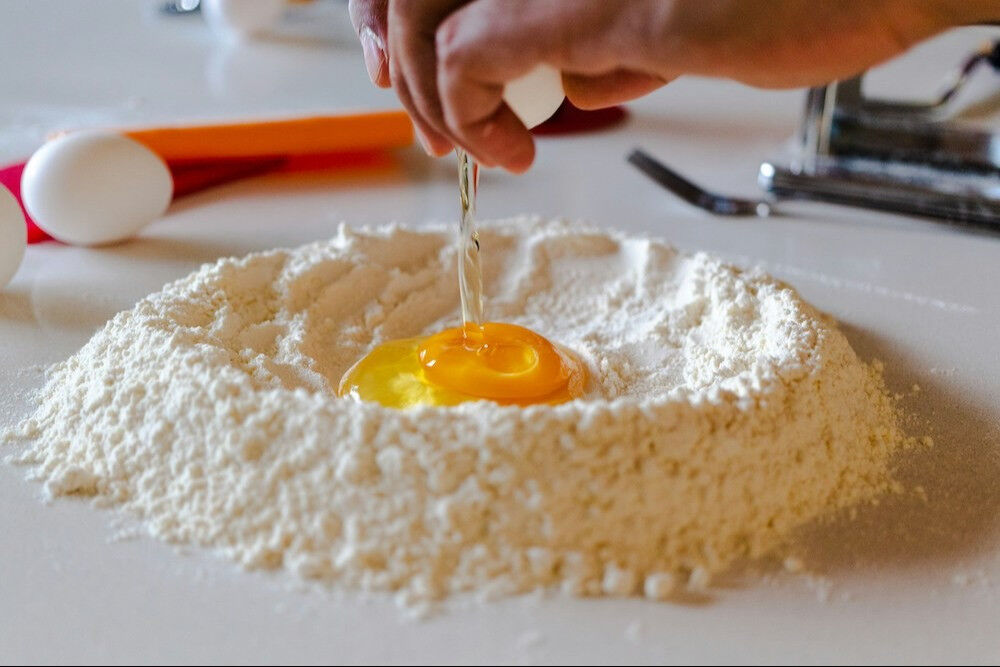10 Tips for Making the Perfect Egg Pasta Dough

Whether you’re rolling out silky tagliatelle, delicate ravioli, or rustic tortellini, mastering pasta dough is one of the most satisfying milestones in Italian cooking. At Mama Florence, we believe that great pasta begins with understanding the balance between simplicity and precision — just flour, eggs, and a bit of love.
The type of dough you make will depend on the pasta shape, the region of Italy you’re inspired by, and of course, your personal taste. Follow our chef-approved tips below to create beautiful, golden sheets of pasta just like we do in our Florence kitchen.
1. Use a 50/50 Blend of "00" and Semola Rimacinata
Italian farina tipo 00 is extra-fine, creating a silky, smooth texture, while semola rimacinata di grano duro (fine semolina) adds structure and a delicate bite. Combining the two gives you the perfect balance of softness and strength.
2. Follow the Ratio Rule: 1 Egg per 100g of Flour
This traditional ratio is a reliable foundation for two servings of pasta. Remember to adjust slightly for larger or smaller eggs — and for the humidity of your kitchen!
3. Add Extra Yolks for Richness
If you’re making filled pasta like ravioli or tortelloni, or simply want deeper color and flavor, add an extra yolk or two. It enhances elasticity and gives your dough that signature golden hue.
4. Use Room-Temperature Eggs
Cold eggs can stiffen the dough, making it harder to knead. Let your eggs rest at room temperature for about 30 minutes before mixing.
5. Make a Well, Not a Wall
On your work surface, form a mound of flour and create a deep well in the center. Crack your eggs into the well and gently whisk with a fork, gradually pulling flour from the edges until a rough dough forms.
6. Knead Thoroughly — 10 to 12 Minutes
Kneading develops the gluten that gives pasta its smooth, elastic texture. Keep going until the dough feels springy and soft under your hands. Resist the temptation to add water — patience pays off!
7. Rest the Dough
Wrap the dough tightly in plastic wrap or cover it with a damp towel. Let it rest for at least 30 minutes at room temperature. This allows the gluten to relax and makes rolling much easier.
8. Don’t Overflour While Rolling
Use just enough flour to prevent sticking, but avoid over-dusting. Too much will dry out the dough and toughen your pasta.
9. Roll Gradually
If using a pasta machine, pass the dough through each setting twice. This ensures even thickness and a beautifully consistent texture.
10. Cook Fresh or Store Properly
Fresh pasta cooks in just 2–3 minutes in salted boiling water. If you’re not cooking it immediately, either dry it completely or form it into nests and freeze — it will keep beautifully for your next meal.
Conclusion
Making egg pasta dough from scratch is more than a recipe — it’s a ritual of touch, rhythm, and patience. Each fold and roll connects you to generations of Italian home cooks who’ve perfected this art over centuries.
At Mama Florence, we celebrate these timeless techniques every day in our kitchen, and we invite you to join us for a hands-on pasta-making class in Florence to experience the magic yourself.

